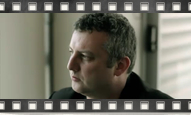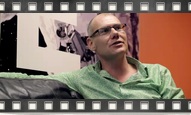2005: Second coming of the web
In 2002, we definitively proved that pigs could not fly. In 2005, we felt the need to assess the flight worthiness of ferrets. As it turned out, they couldn’t fly either. But the Web in general was set to soar.
Track of the Year 2005

Toy Love - Bride Of Frankenstein (Cuts, 2005)
There was New Zealand music that we liked before punk, but not that much. It has to be said that Toy Love was one of the few quality acts to come out of the early punk explosion and they burned bright. They were a force for change and ultimately a huge influence on the future. This song meshes b grade horror and things gothic into one giant ball of Toy Love generated momentum. - Roger Shepherd
[ Watch Video ]
Track of the Year by Records
Renewed confidence in online business
2005 saw the second coming of the Internet. The burst of the dotcom bubble was becoming a distant memory and with new technologies and greater broadband penetration, confidence in online ventures was growing rapidly.
So much so that Telecom saw fit to launch an online mall in November, Flying Pig’s demise just three years earlier proving no deterrent. Ferrit.co.nz launched with a seemingly massive 1.2 million products from 56 retailers.
But it also launched with no ability to actually buy anything online, a functionality that would come the following year. And three years following this - would come the shutdown of our second high-profile online mall flop.
Yet again, a big local bet on the Internet failed to pay off – but online shopping was growing rapidly. Up 80% by sales volume on 2004, Kiwis spent $56 million online in March 2005 alone, putting New Zealand in third place of the region’s biggest online spenders by total sales volume, behind Japan and Australia and ahead of Hong Kong and Singapore.
With failure still four years off for Ferrit, in 2005 the launch was just more evidence that the Internet was back in the good books of business and investors.
Web 2.0 ushers in the read/write Web
Overseas they were calling the second bubble ‘Web 2.0’. Exactly what this meant varied depending on the commentator you asked, but it was most simply explained in the name of a local blog, soon to become internationally successful - ReadWriteWeb.
What differentiated Web 2.0 from the Web’s previous incarnation was that users did not simply consume information (‘read’) but they also contributed their own (‘write’). The key was, as some people had always had the ability to create websites, that new technologies allowed anyone, no matter what their technical literacy, to contribute to the Web.
In 2005, the shining example of this was the launch of every workplace IT manager’s peeve – YouTube. What had once been an extremely difficult technical proposition - getting video onto a Web page - was now within any Internet user’s reach. But broadband was an advantage and in New Zealand in this year only about 30% of us had Internet at home, with just 30% of that access being faster than dial-up. Which is why YouTube quickly became a workplace pleasure, or pain, depending on your job title.
Success without technical savvy

Telecom customers cut off after rat chews main cable
In March, TelstraClear’s fibre optic cable is knocked out by a fire in a Hamilton underground rail tunnel. In June, the uncannily coordinated combination of a power company post hole digger and a determined rat brings Telecom’s main network down for most of the day.
Web 2.0’s bubble instantly proved more democratic than the first. Large amounts of start-up capital were less of a requirement, as were deep technical skills in some cases. Web 2.0 was often more about building on top of existing technologies and plugging (or ‘mashing’ as it became known) them together.
Nothing said second bubble more than the ‘million dollar homepage’ that earned a 21-year-old American student US$1 million in 2005. His idea was simple – sell pixels on a single webpage for $1 each. Businesses could purchase any number of them – enough to place their logo on the page for instance. The sheer simplicity and cheek of the idea sparked media interest and having your logo on the page was perceived worthwhile as that interest drove massive traffic to the site.
Back home, this wave of amateur Internet entrepreneurialism was showcased by a couple who decided to use Trade Me to auction off advertising space on the pregnant woman’s belly. The winner paid $255 to have his company slogan ‘The Mailman always delivers’ emblazoned on her t-shirts for the months prior to giving birth.
Cloud-based technology shines
The Web’s second coming was more than just renewed confidence and low-tech ideas. Some start-ups created mid-decade were deeply technical and pushed browsers to – and sometimes past – their limits.
Serial tech entrepreneur Rod Drury epitomised this end of the spectrum. In 2005, he was a year away from selling his email management company AfterMail to US-based Quest Software for US$45 million. Not resting on his laurels, following this he immediately went on to launch Xero, a Web-based accounting package.
Xero showcased the other important aspect of Web 2.0. Websites were frequently becoming more like desktop applications than mere advertising brochures. Xero was one of our first local Web 2.0 applications that would come to be known as ‘cloud’-based – because rather than being software that had to be installed on an individual computer, it could be accessed from any Web browser living on the Internet, in ‘the cloud’.
Drury was also one of New Zealand’s first Segway owners – which was to early Web 2.0 businesses as the Razor scooter was to the offices of the first bubble. In 2006, he actively embraced the possibility that the Web 2.0 bubble was one that could burst saying in Idealog magazine, “We saw the craziness happening in ’99 and 2000 and I thought ‘man I hope I’m around when this happens again’”.
From 2005 on an increasing number of web 2.0 based Internet start-ups would be born - many to be fostered in incubators in our major cities.
Local Web 2.0 sites for everyone
Many early web 2.0 sites were business-to-business focused - replacing expensive applications. They often weren't pretty but they got the job done and showed return on investment that desktop, or enterprise software often took much longer to realise.
New Zealand’s early Web 2.0 explosion was far from limited to business-to-business propositions though, even in 2005. For instance, the AA launched a journey planner addition to their online maps and NZ Post allowed you to design your own stamps online. And the government was running trials for 2006, the year we were able to fill the census in online for the first time.
All of this innovation was not without a downside. Lower cost Web 2.0 businesses quickly impacted on offline businesses in some segments. In 2005, Dunbar Sloane, the art auctioneer, publicly cited competition from Trade Me as a reason for layoffs. Within a few years Xero would be butting heads with offline accounting software like MYOB.
A successful year for the local Internet
In 2005, we were internationally successful at the Internet – both at building it, with a local web design agency winning our first ‘Webby’ at the Internet’s equivalent of the Oscars™ for our national tourism site – and at using it to grow our businesses, with premium spirits maker 42 Below winning the top Deloitte/Unlimited Fast 50 award for a massive 2116% growth.
Many credited much of this growth to their pioneering ‘viral videos’ that had found an international audience with their irreverent humour – spreading via modern ‘word of mouth’, passed around via email and Instant Messenger.
What were your
Kiwi Websites of the Year?

Te Ara – The Encyclopedia of New Zealand [b.2005]
The first online national encyclopedia. It is written specifically for the web in plain english and connects images and media previously lost in archives with each entry. Te Ara is cited as an authoritative source throughout Wikipedia. Winner of multiple awards for both visual design and writing. [ View Site ]

Tourism New Zealand [b.1999]
The official Tourism New Zealand site. Showcasing the beauty of Godzone to the world since 1999. Won New Zealand's first Webby award in 2005. [ View Site ]
Further Reading
Internet access stats Drury on entrepreneurship Baby bump advertising Million dollar homepageAll
Anecdote
Event





